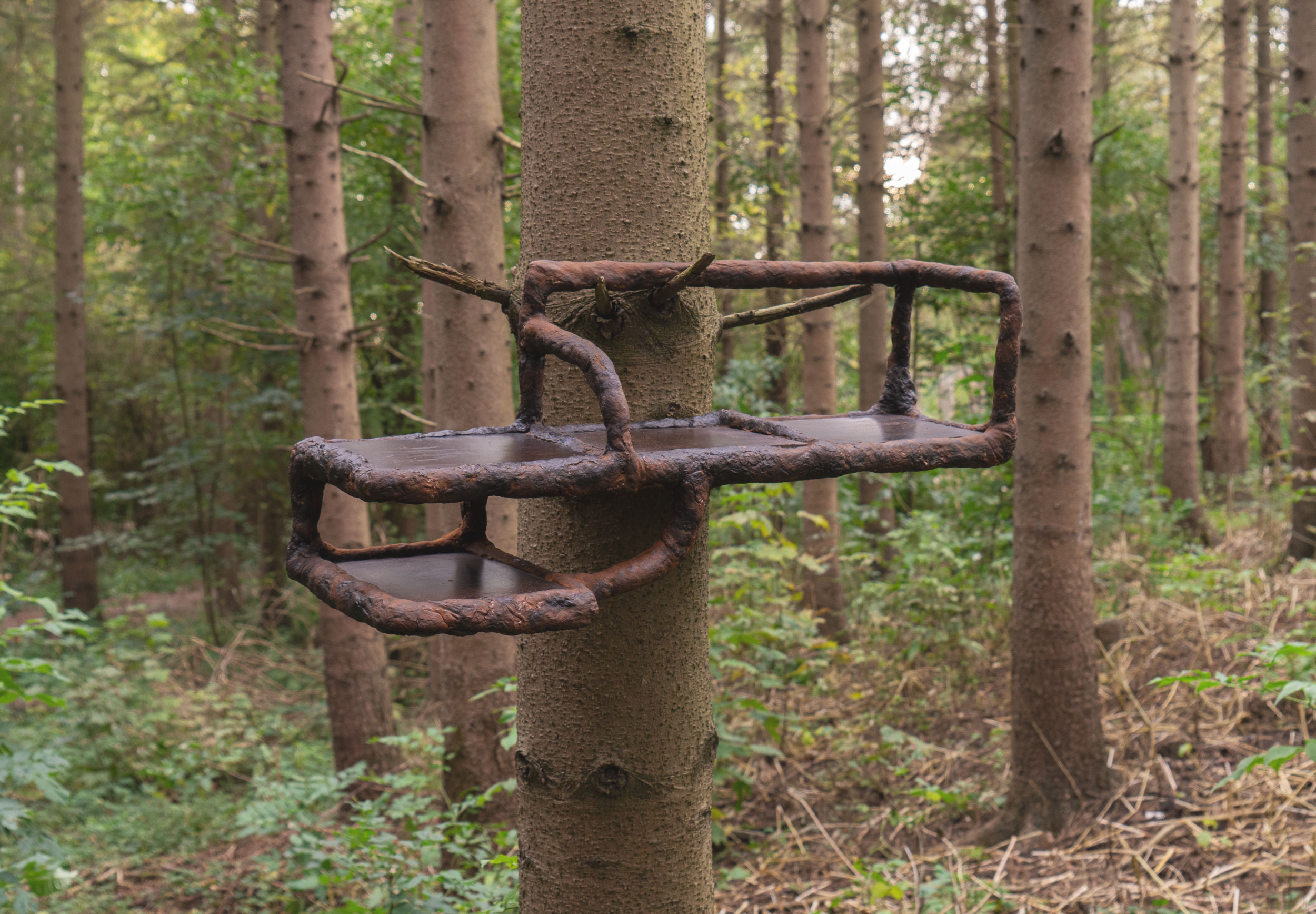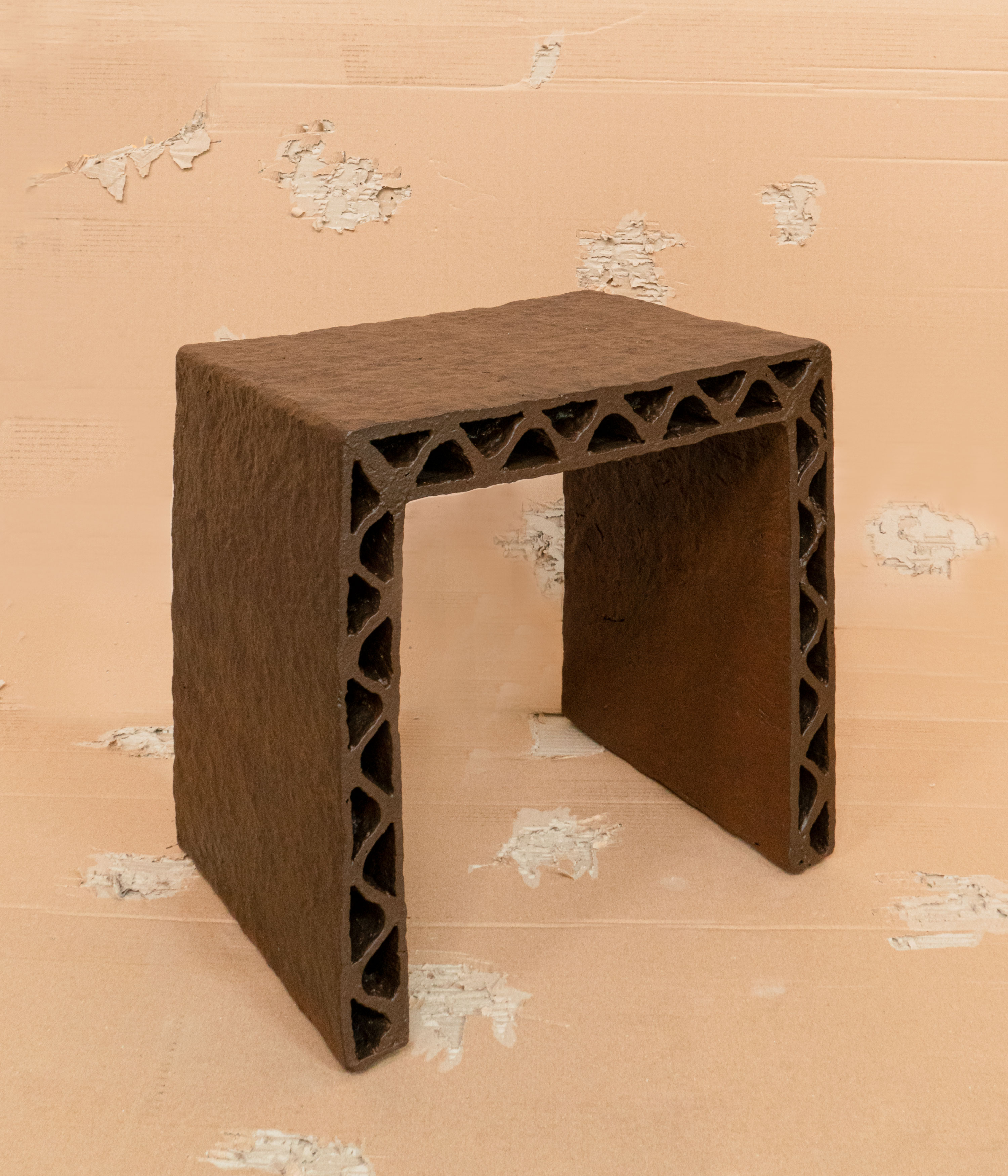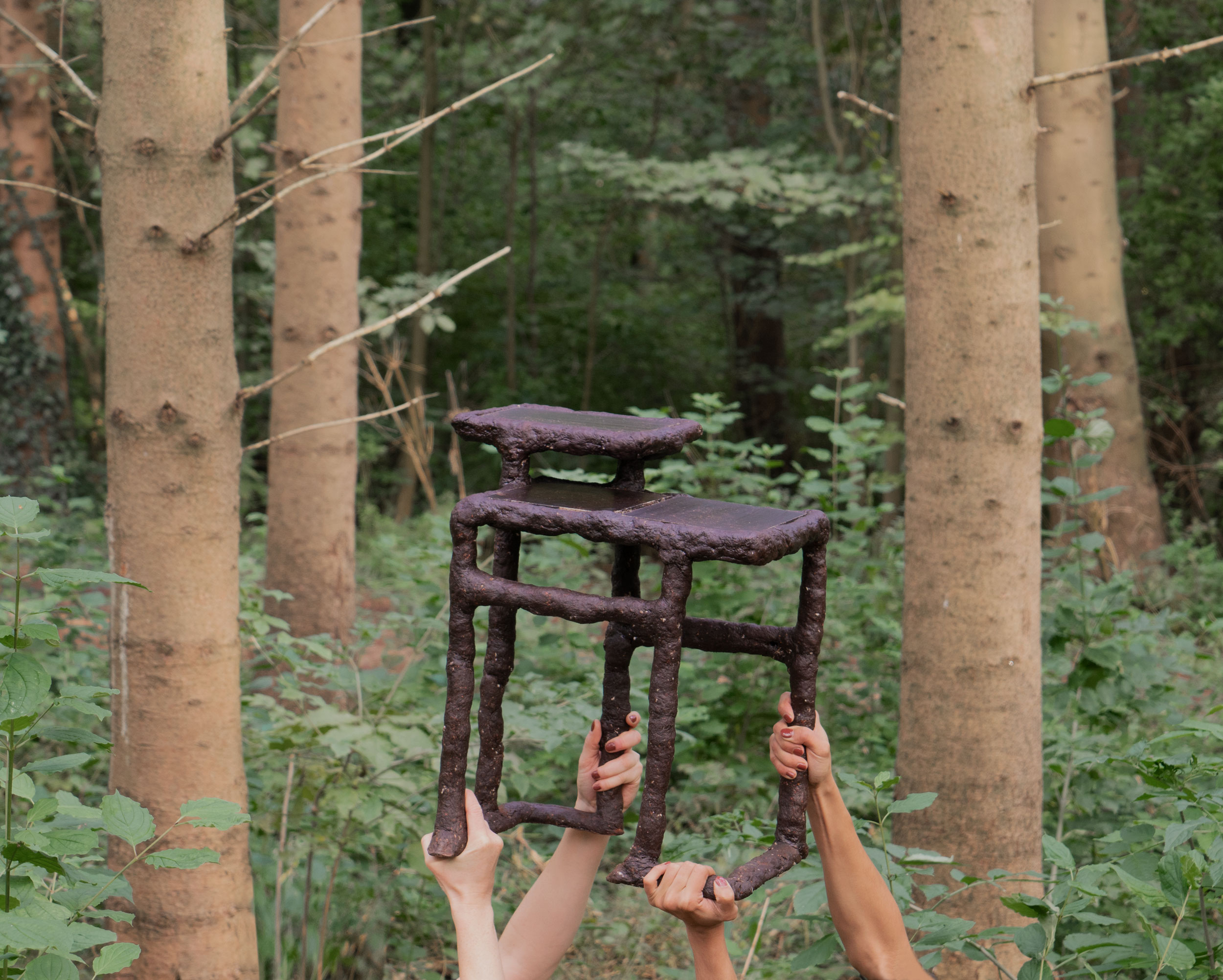8. Tree-ism

Year: 2022
Material: Lignin, recycled cellulose
European Spruce (Picea Abies) has evergreen leaves and likes to grow in deep, wet soils.
Once harvested it can be turned into wood chips, and then into cellulose fiber by ways of extracting a brownish substance called lignin.
Cellulose and lignin are the two most abundant organic polymers on earth. While one is used excessively in a host of different industries such as the paper and textile industry, the other stays largely unexplored, remaining an underutilized by-product. In fact, to date lignin is mostly burned in thermal waste plants for the production of energy, with all the consequential negative emissions.
This project traces the journey that those two polymers take, back to the moment when the cellulose fiber was held together by the lignin in a tree.

In Europe’s agroforestry, Picea Abies, or European Spruce, is one of the most cultivated trees, often grown in large monocultures for its pulp, timber and resin.
Complex industrial production uprooted the connection between plants as suppliers for products and the consumer. It is difficult to hold a piece of paper and see a tree. The objects made in this project are meant to evoke mindfulness and a connection to the source of their material, when held they can hopefully remind you of a tree, the rough texture of the bark, the year rings that keep track of the seasons and the landscape in which the tree grew.

Tree-ism is a design-research project exploring, through storytelling and by means of tangible physicalities, the immense potential offered by lignin when reconnected with cellulose, through processes of recombination and rematerialisation of residual matters.



At the center of the physical material research stands the ambition to find multiple ways to reconnect lignin with cellulose and link them conceptually to the processing of the two polymers across scales while imagining possible futures of regenerative transformation.
Currently those reconnections manifest themselves in three different materialities:
- Thermoformed biocomposite consisting of lignin and cellulose. The two components are mixed together and are then filled into a metal mold and heat pressed at 180° C with around 10 tons of pressure. Heat and pressure activate the inherent binding properties of lignin without the addition of synthetic substances. Just like in a tree lignin binds the cellulose fiber to each other, therefore creating a remade wood bioplastic.
- Polymer Clay made from Lignin Sulfonate, cellulose fiber and water. Being a by-product of paper production, which in itself is a gigantic industry, lignin comes in many different forms that vary depending on the different paper production methods. One of the most commonly used methods is called kraft pulping in which the lignin is made soluble through the use of sulfates. This lignin stays water soluble which offers the opportunity to create hydrogen bonds between the lignin polymers and once it is mixed with cellulose fiber it turns into a strong polymer clay that is plant based without any synthetic components.
- Ink / Coating made from lignin, arabic gum, turpentine from the orange tree, linseed oil and water. This ink can be used to silkscreen print onto cellulose based paper and through that form another reconnection between lignin and cellulose. Another application is to create a coating for the polymer clay and the thermoformed biocomposite, to make it water resistant through increasing the amount of arabic gum and linseed oil in the formula. This process is still being developed at this moment.
